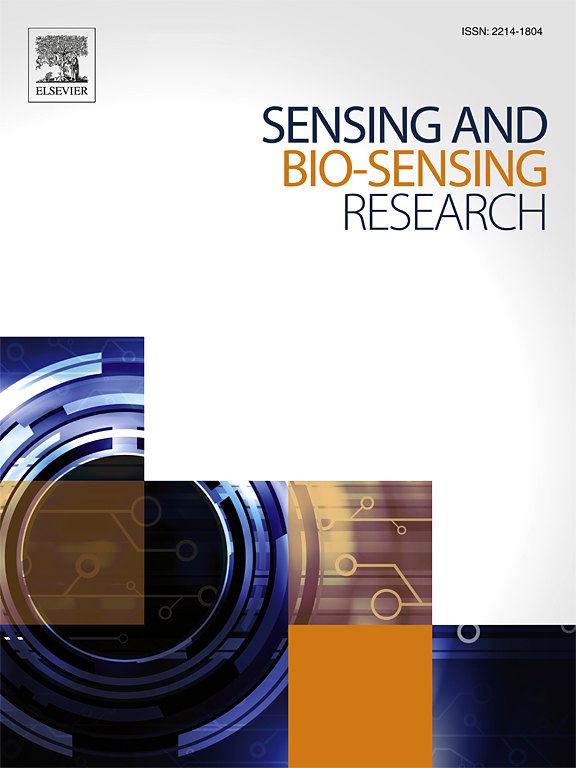Ultrahigh effective mode area photonic crystal fibers with extremely low bending loss for long distance transmission application
IF 5.4
Q1 CHEMISTRY, ANALYTICAL
引用次数: 0
Abstract
In this work, an extremely large mode area (LMA) photonic crystal fiber (PCF) design has been proposed having single mode operation. A full-vectorial finite element method (FEM) approach is considered with perfectly matched layer (PML) boundary for hybrid cladding with fluorine-doped silica holes in the cladding. An ultrahigh effective mode area can be achieved along with maintaining robust single mode operation. The hybrid cladding structure of the fiber makes it possible to exhibit lower bending loss and confinement loss. The proposed PCF design achieves an effective mode area of at straight state and at bending state for a radius of at a wavelength of . The proposed fiber also exhibits both an extremely low confinement loss of and a bending loss of at of bending radius at wavelength. Moreover, the ultrahigh effective area of the fiber makes it possible to obtain an ultralower non-linear coefficient.
具有超低弯曲损耗的超高有效模面积光子晶体光纤,适用于远距离传输
本文提出了一种单模工作的极大模面积光子晶体光纤(PCF)设计方案。采用完全匹配层(PML)边界的全矢量有限元方法,研究了包层中掺氟硅孔的杂化包层问题。在保持稳健的单模工作的同时,可以实现超高的有效模面积。光纤的杂化包层结构使得光纤具有较低的弯曲损耗和约束损耗。所设计的PCF在1550nm波长下,半径为30cm,直线状态下有效模面积为1727.55μm2,弯曲状态下有效模面积为719.08μm2。该光纤在1550nm波长下具有极低的约束损耗4.745×10−4dB/Km和弯曲损耗6.11×10−4dB/Km。此外,光纤的超高有效面积使得获得超低的非线性系数成为可能。
本文章由计算机程序翻译,如有差异,请以英文原文为准。
求助全文
约1分钟内获得全文
求助全文
来源期刊

Sensing and Bio-Sensing Research
Engineering-Electrical and Electronic Engineering
CiteScore
10.70
自引率
3.80%
发文量
68
审稿时长
87 days
期刊介绍:
Sensing and Bio-Sensing Research is an open access journal dedicated to the research, design, development, and application of bio-sensing and sensing technologies. The editors will accept research papers, reviews, field trials, and validation studies that are of significant relevance. These submissions should describe new concepts, enhance understanding of the field, or offer insights into the practical application, manufacturing, and commercialization of bio-sensing and sensing technologies.
The journal covers a wide range of topics, including sensing principles and mechanisms, new materials development for transducers and recognition components, fabrication technology, and various types of sensors such as optical, electrochemical, mass-sensitive, gas, biosensors, and more. It also includes environmental, process control, and biomedical applications, signal processing, chemometrics, optoelectronic, mechanical, thermal, and magnetic sensors, as well as interface electronics. Additionally, it covers sensor systems and applications, µTAS (Micro Total Analysis Systems), development of solid-state devices for transducing physical signals, and analytical devices incorporating biological materials.
 求助内容:
求助内容: 应助结果提醒方式:
应助结果提醒方式:


